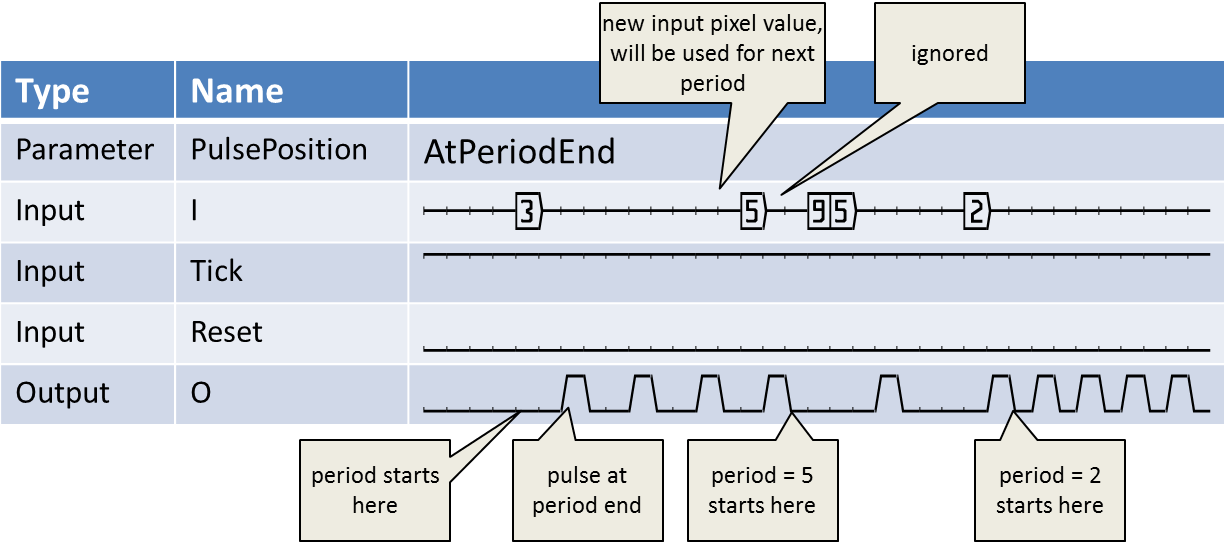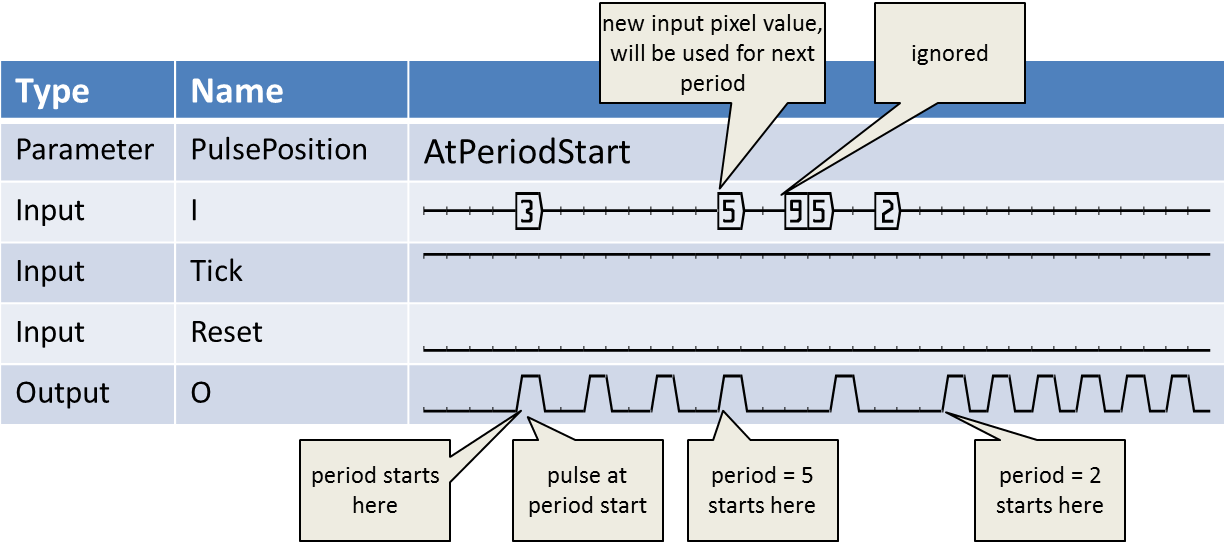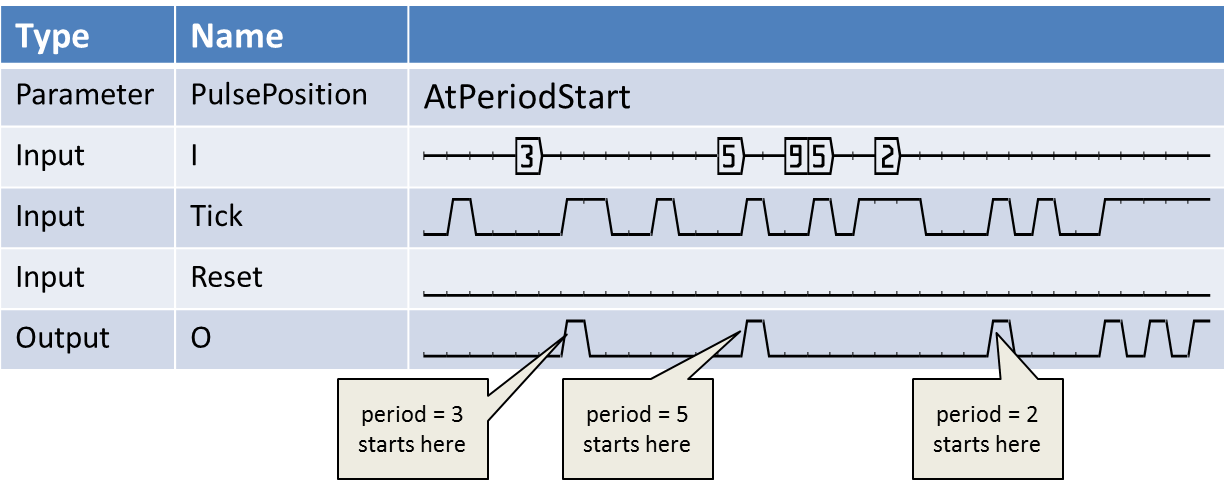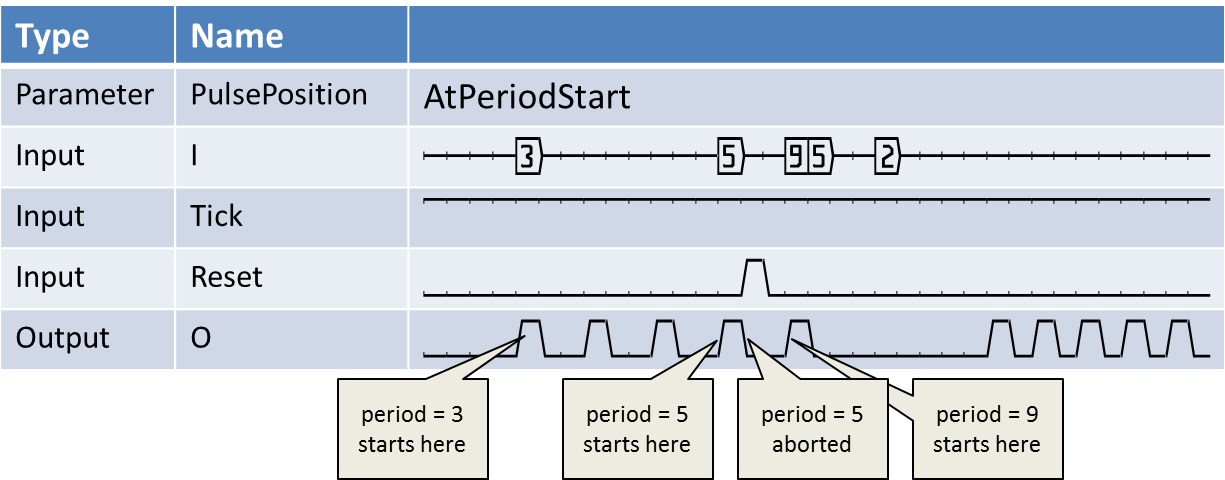Operator Library: Signal
The operator generates a periodic signal at its output. The period time is controlled by the pixel value at the input link I. Thus the operator converts the input stream values into a signal with the period provided by the pixel values. The high time of the output pulses is one tick.
During processing of a current signal generation with a specified period, the operator will ignore any new values at the input. After the processing of a period is finished, the generates a new period with the length of the last valid input pixel value. The pulse position can either be at the beginning or at the end of a period and is controlled using parameter PulsePosition. In the following figure, the operator's behavior is illustrated.

The next figure shows the generation of the pulse at the start of a period.

The period time is measured in Ticks being high. Tick is a signal input and can be used like a prescaler. For every high value at the Tick input, the period time is counted. The following waveform shows the behavior of the Tick input to the period generation. In most cases, the Tick input is not required. Tie it to operator VCC in this case.

The Reset input link is used to reset the operator. This is useful if a long period or sequence has to be cancelled. In the next figure, the reset usage is illustrated.

This operator is excluded from the VisualApplets functional simulation.
| Property | Value |
|---|---|
| Operator Type | M |
| Input Links | I, pixel data input Tick, signal input Reset, signal input |
| Output Link | O, signal input |
Synchronous and Asynchronous Inputs
- All signal inputs may be sourced by the same or different M-type operators through an arbitrary network of O-type operators. If they are sourced by the same M-type source, they will be automatically synchronized.
- Input link I is asynchronous to the signal inputs.
| Link Parameter | Input Link I | Input Link Tick | Input Link Reset | Output Link O |
|---|---|---|---|---|
| Bit Width | [1, 64] | 1 | 1 | 1 |
| Arithmetic | unsigned | unsigned | unsigned | unsigned |
| Parallelism | 1 | 1 | 1 | 1 |
| Kernel Columns | 1 | 1 | 1 | 1 |
| Kernel Rows | 1 | 1 | 1 | 1 |
| Img Protocol | {VALT_IMAGE2D, VALT_LINE1D, VALT_PIXEL0D} | VALT_SIGNAL | VALT_SIGNAL | VALT_SIGNAL |
| Color Format | VAF_GRAY | VAF_GRAY | VAF_GRAY | VAF_GRAY |
| Color Flavor | FL_NONE | FL_NONE | FL_NONE | FL_NONE |
| Max. Img Width | any | any | any | any |
| Max. Img Height | any | any | any | any |
| PulsePosition | |
|---|---|
| Type | static parameter |
| Default | AtPeriodEnd |
| Range | {AtPeriodStart, AtPeriodEnd} |
|
The output pulse can either be at the start of each period or at the end of each period. |
|
The use of operator PeriodToSignal is shown in the following examples:
-
'Functional Example for Specific Operators of Library Signal, Logic, Filter and Parameters'
Examples - Demonstration of how to use the operator

 Prev
Prev

